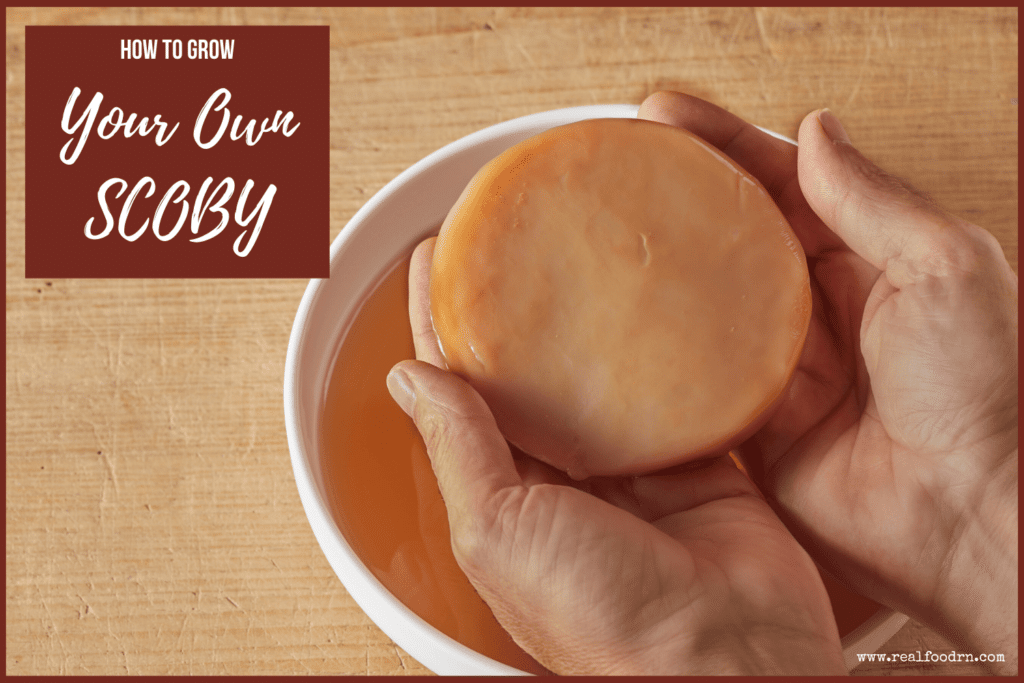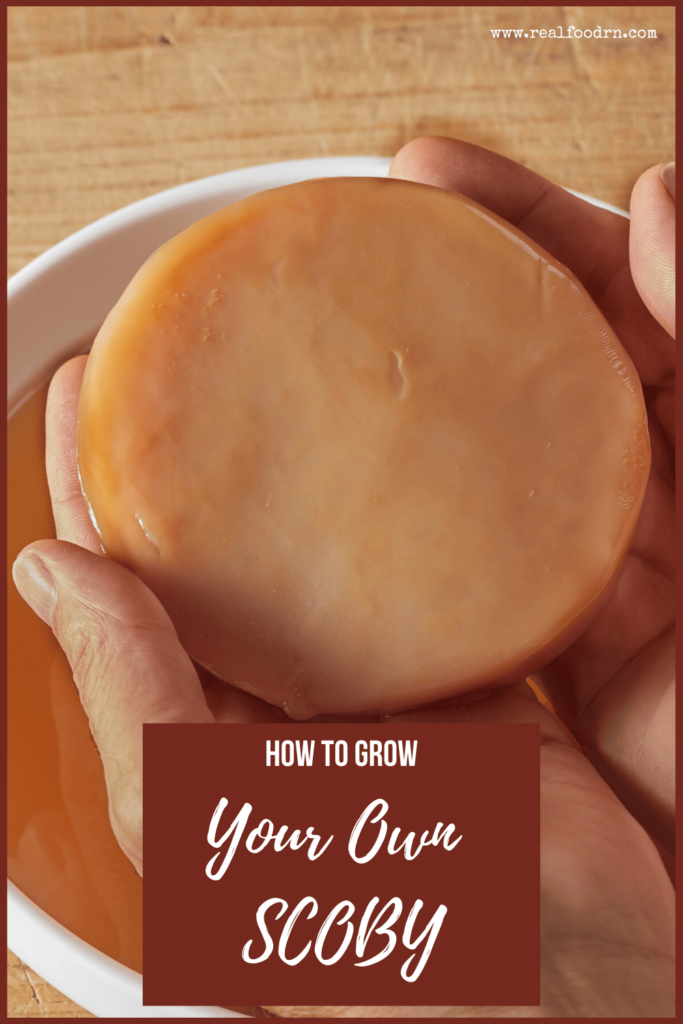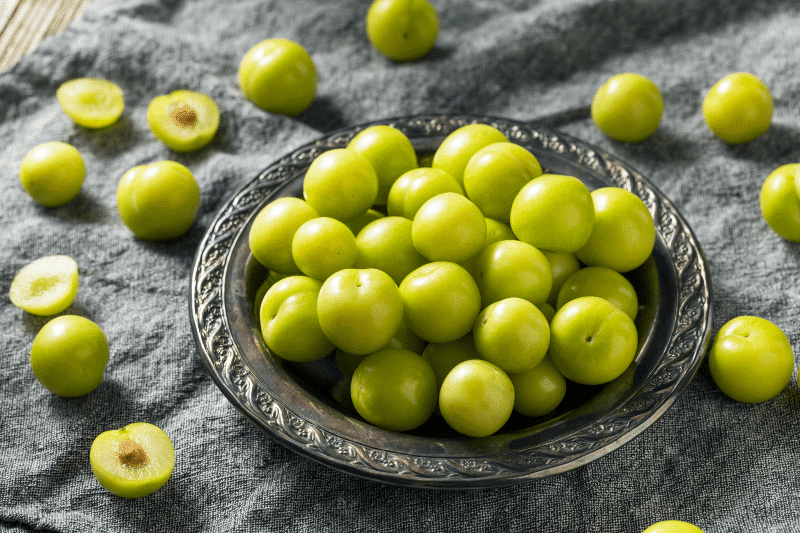
I must admit, this crunchy mama loves kombucha for the probiotic properties alone—but the versatility of this beverage from a health perspective was also super impressive! After trying a variety of kombucha at different stores, I had to try making it myself. As I started learning more about kombucha and how it is made and nurtured, I heard it takes a SCOBY to make it. Wait, what’s a SCOBY?!
When I first learned about how to make homemade kombucha, I found myself laughing with my kids about Scooby Doo. Do you think he drinks kombucha? He’d probably love my SCOBY fruit roll ups, my kids sure do!
Fortunately, you don’t need to watch an old cartoon to get your hands into making homemade SCOBY yourself. Turns out, SCOBY has a lot more uses than just kombucha. From nurturing your garden’s soil to feeding your dogs some probiotic treats, making SCOBY is a fantastic addition to your homesteading knowledge. It just takes a little creativity and know-how, and you can grow your very own!
What is a SCOBY?
SCOBY is an acronym for Symbiotic Culture of Bacteria and Yeast. This delicate combination is why kombucha is so healthy for you—a combination of healthy acids and balanced probiotics.
People love to get SCOBY from other brewer friends. If you don’t have any fellow kombucha lovers in your circle, I’m here to teach you how to make your own from the ground up.
Supplies for Growing Your Own SCOBY
- Brewing Vessel
- Small Cloth
- Elastic Band
- 1 cup unbleached or white cane sugar
- 1 bottle of plain kombucha
- 8 black tea bags
- Filtered water
- Kombucha brewing vessel (I use these jars)
While this list can be a bit daunting at first for the setup, overall, it is much cheaper than buying a single bottle of kombucha in the supermarket. You can also give people who try your kombucha a piece of your SCOBY or some kombucha as a gift. The benefits, for me, outweigh the initial cost, hands down.
Instructions for Growing Your Own SCOBY
- Brew 4 cups of concentrated black tea. Black tea gives a lot of added nutrition to your SCOBY. Black tea has the added benefit of being highly caffeinated, which helps with your energy as well as the added health benefits of probiotics and antioxidant properties.
- Add the sugar to your tea concentrate. When you finish steeping your tea (around 4 minutes steep time) Add your cup of sugar. I know it seems like a lot, but the sugar is the food for the yeast—it will give nutrition to your SCOBY culture. After you add the sugar, let the tea cool to room temperature and remove the tea bags.
- Add the sweet tea and raw, plain kombucha to the brewing vessel. Pour the contents into the brewing vessel once everything has reached around room temperature.
- Cover your brewing vessel. Cover the brewing vessel with a cloth and secure the top with an elastic band. You want to make sure the band is secure because it will be sitting for some time as the SCOBY forms.
- Leave the mixture alone for a week (or 3!). You want to allow the SCOBY to form—store the brew in a room temperature to warm, dry place—between 68 and 85 degrees is an ideal temperature to cultivate the SCOBY. If you are looking for another tool to ensure that your SCOBY thrives, you can invest in a Kombucha Heating Wrap. SCOBY thrives under a certain temperature threshold, so if you are looking to make kombucha during winter, your SCOBY has a better chance of surviving consistently if you have one of these. They can also cut down the time it takes to successfully form a healthy SCOBY by a few weeks.
How Do I Know My SCOBY is Healthy?
A baby SCOBY that is healthy will look like a clear to a creamy opaque cloud floating on top of the fermented liquid. When making kombucha, it is so important to remember this SCOBY is NOT mold! Do not throw away your baby SCOBY! Allow the SCOBY to grow until it reaches about ¼ inch thickness.
You can use this to brew your first batch of Kombucha. Notice as it grows that the color will shift into being creamier as it ages.
If you are having trouble keeping the SCOBY at a warm enough temperature to do its thing, another alternative is wrapping the brewing vessel in LED lights. It definitely helps during the winter months. You can also invest in a Kombucha Heating Wrap, made specifically for growing SCOBY in mind.
Feeding Your SCOBY
If you are looking to brew kombucha, again and again, it’s important to remember to feed it since your SCOBY is a living thing! In order to feed it, the SCOBY requires sugar to thrive. Even though there are many sugar types available on the market (honey, maple syrup, brown sugar, etc.), the best sugar for cultivating a SCOBY is unbleached sugar or cane sugar.
The good news is that the SCOBY consumes the sugar, so you don’t have to! Sugar is energy and fuel for the SCOBY, so it doesn’t have as heavy of an impact on your diet as you might think when making the sweet tea mixture.
Remember: SCOBY is the Base for Kombucha!
While it will not hurt you to drink the acidic liquid where your SCOBY started, it isn’t Kombucha yet, so it likely won’t taste much better than drinking apple cider vinegar straight. (Not that there’s anything wrong with that—apple cider vinegar has a host of helpful traits, too!)
When you transition to making kombucha, you want your booch brew to have about 2-3 cups inside your brewing vessel. Because your SCOBY is complete, brewing kombucha will only take a week to develop.
When it comes to creating kombucha, the possibilities are much vaster—you can add different teas, fruit, and sweeteners. Soon you’ll be off enjoying your very own homebrewed kombucha! I personally love lemon ginger kombucha for the added health benefit.
Thirsty for More?
Be sure to check out some of my favorite drinks here. I’ve got some healthy alcoholic options, mom-friendly alternatives, holiday sips, and even a sweet kombucha strawberry shrub. If you aren’t feeling thirsty just yet and you need to listen to crunchy mamas touch base about health, wellness, parenting, and DIY, check out my podcast.
If growing your own SCOBY seems intimidating, you can buy them on Amazon already grown too!
CLICK HERE to Pin this Post









